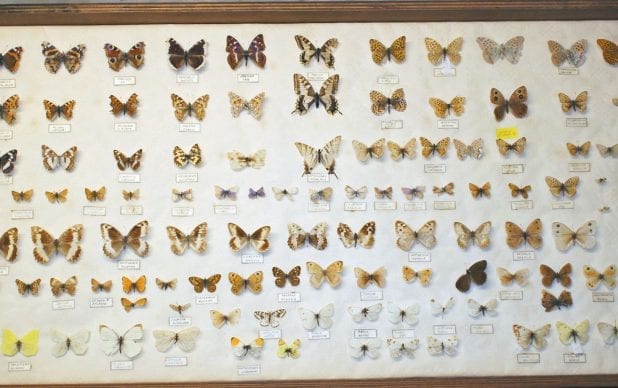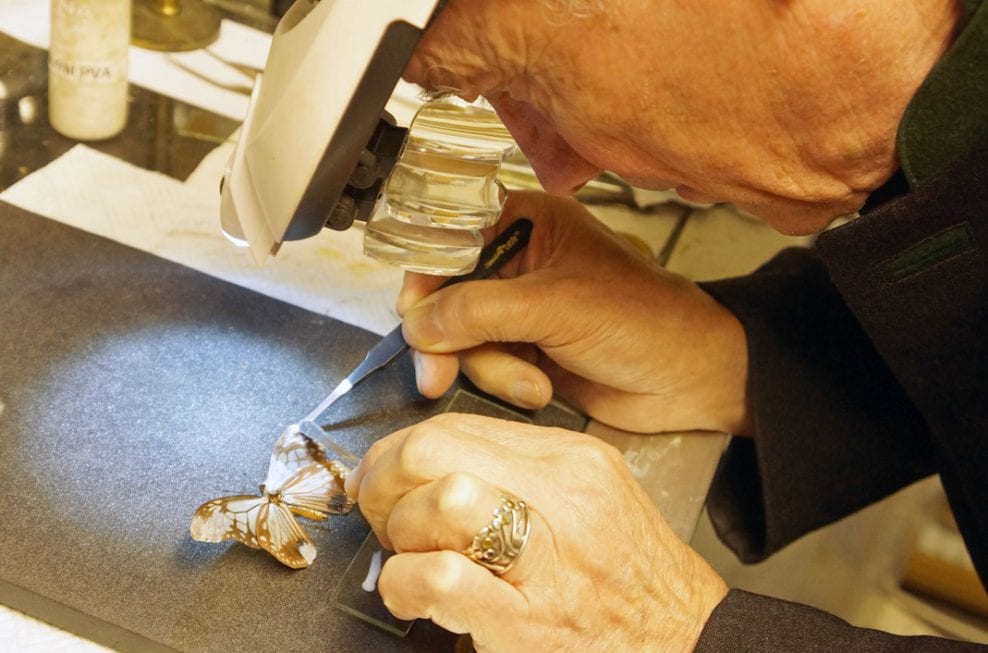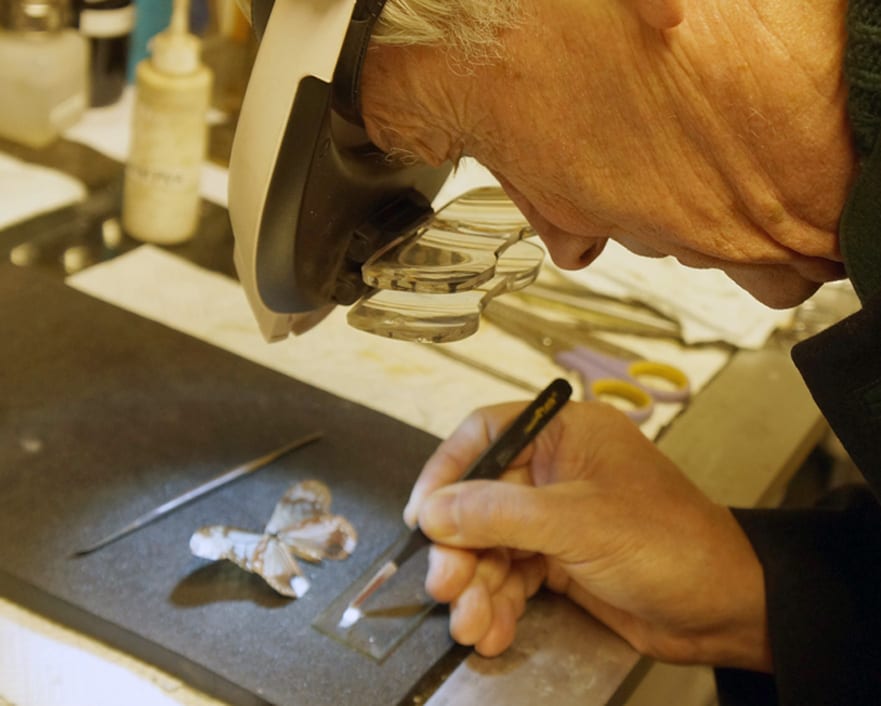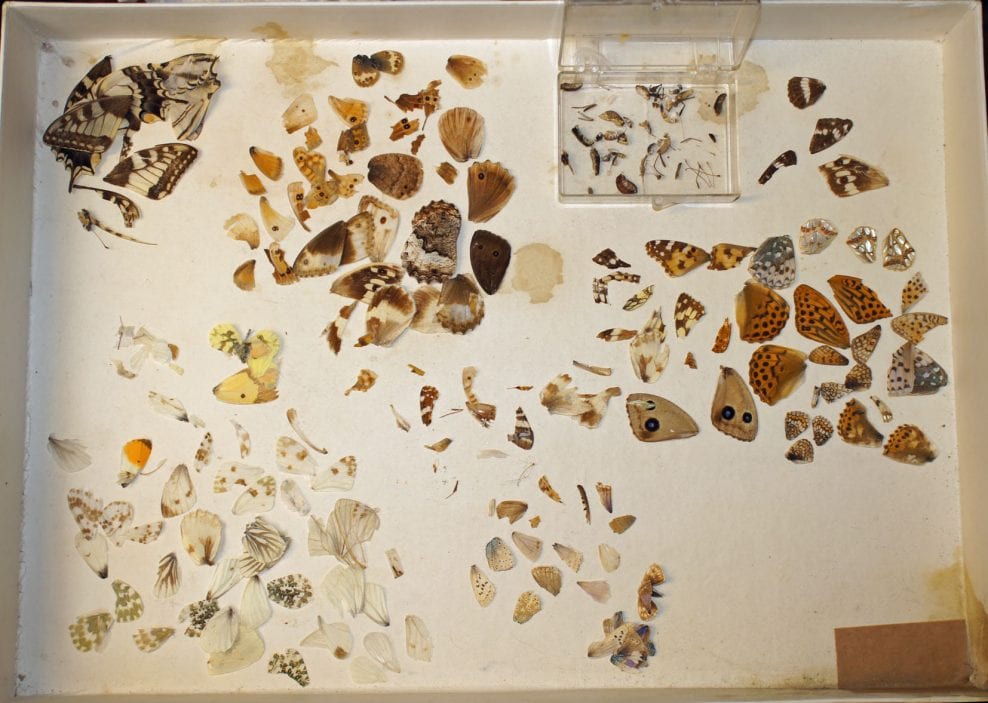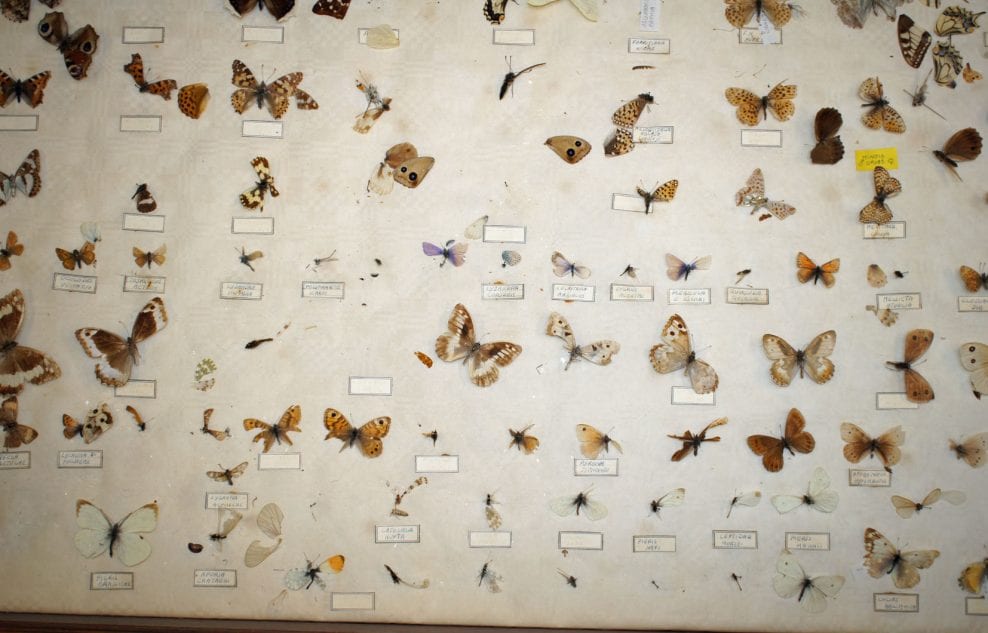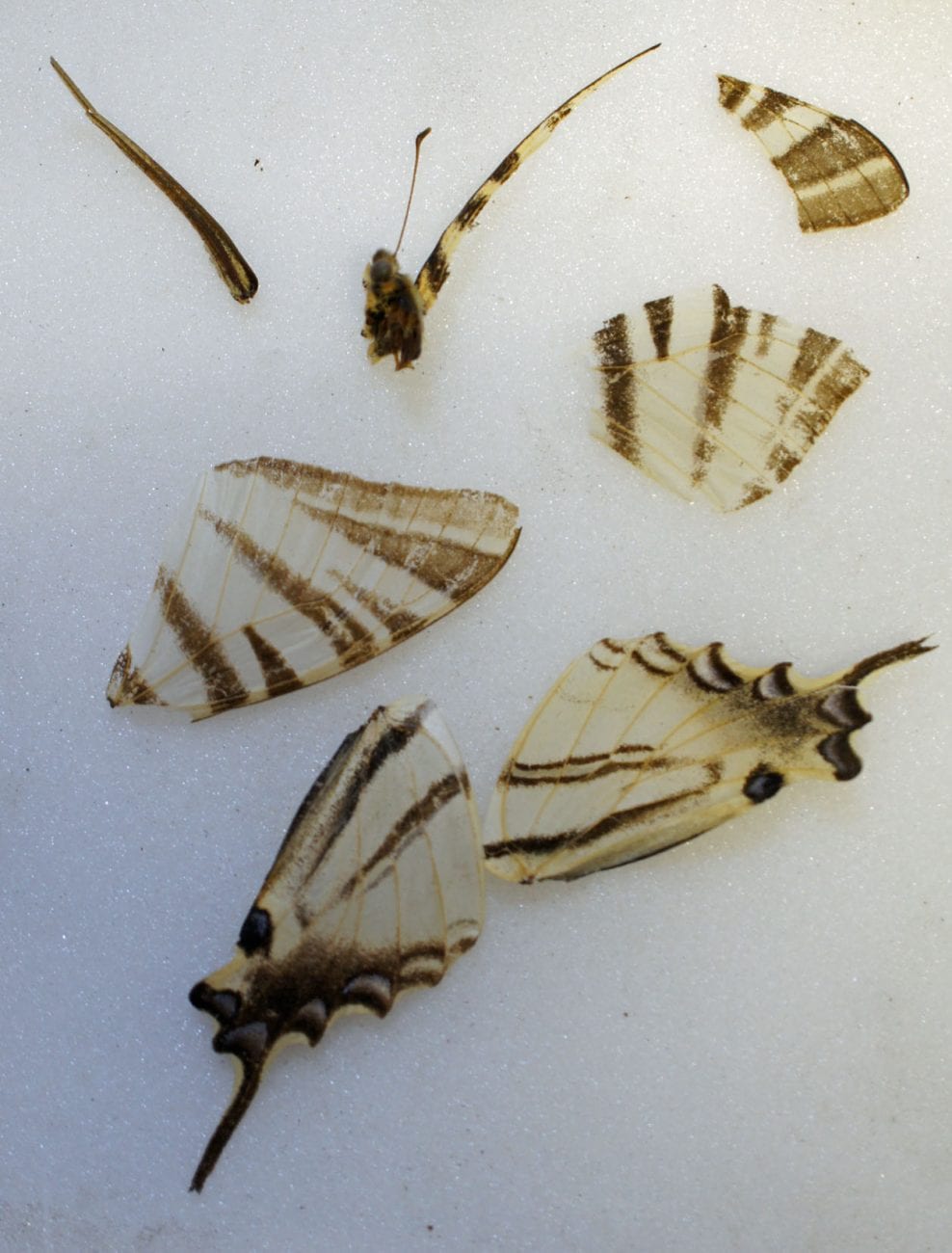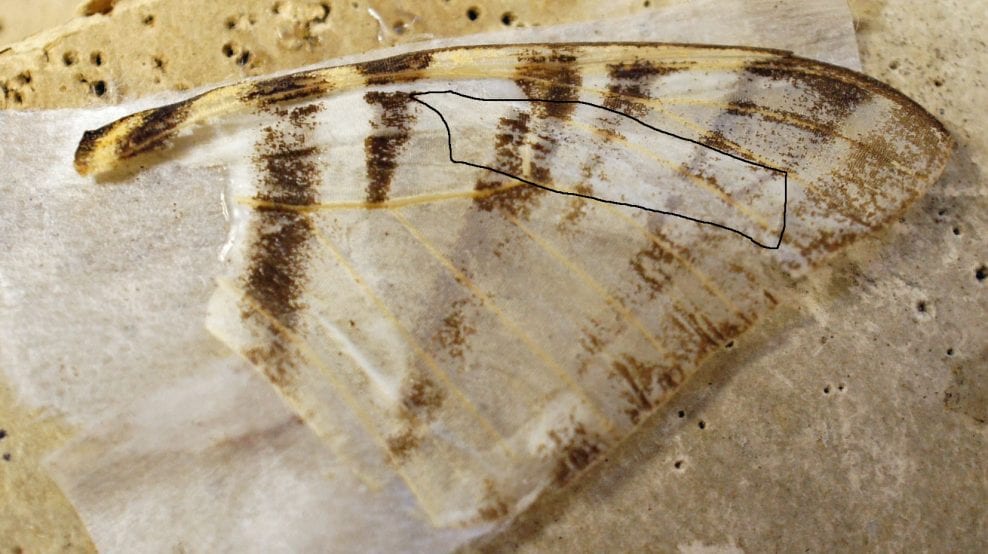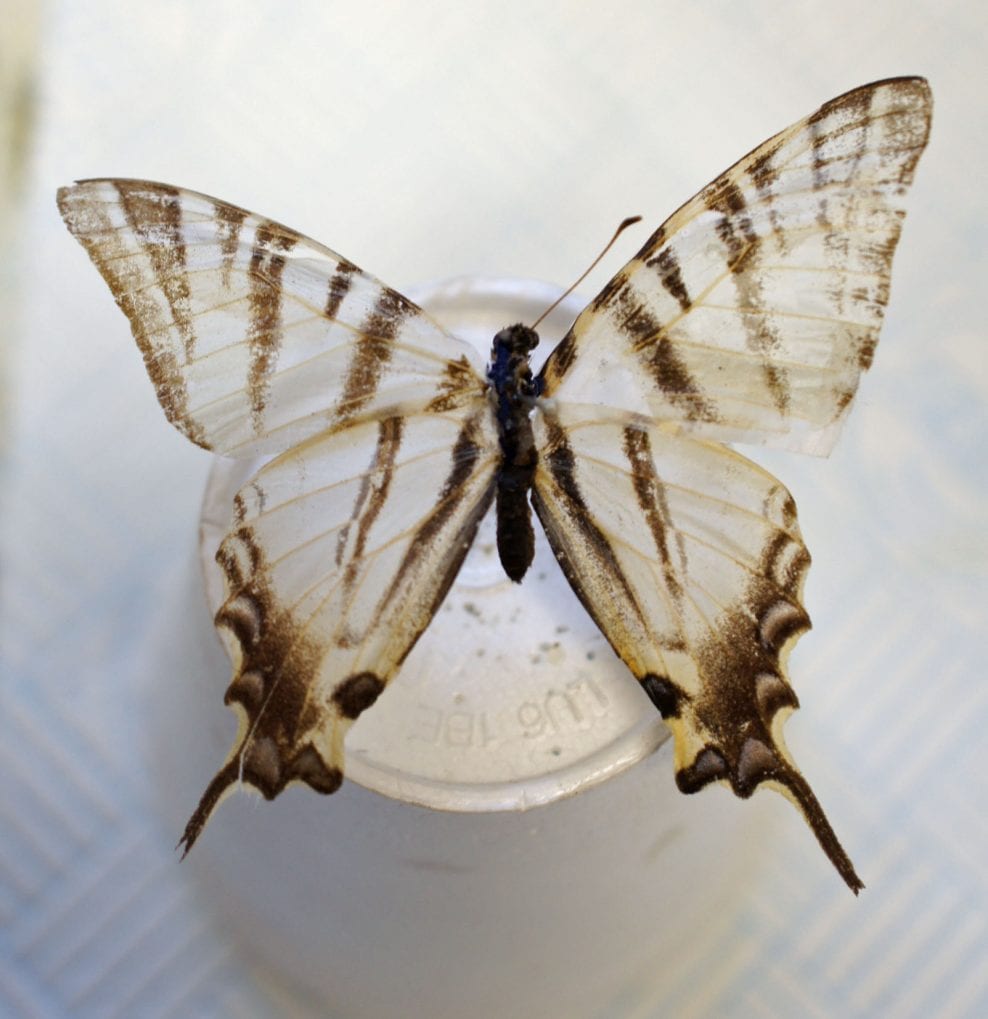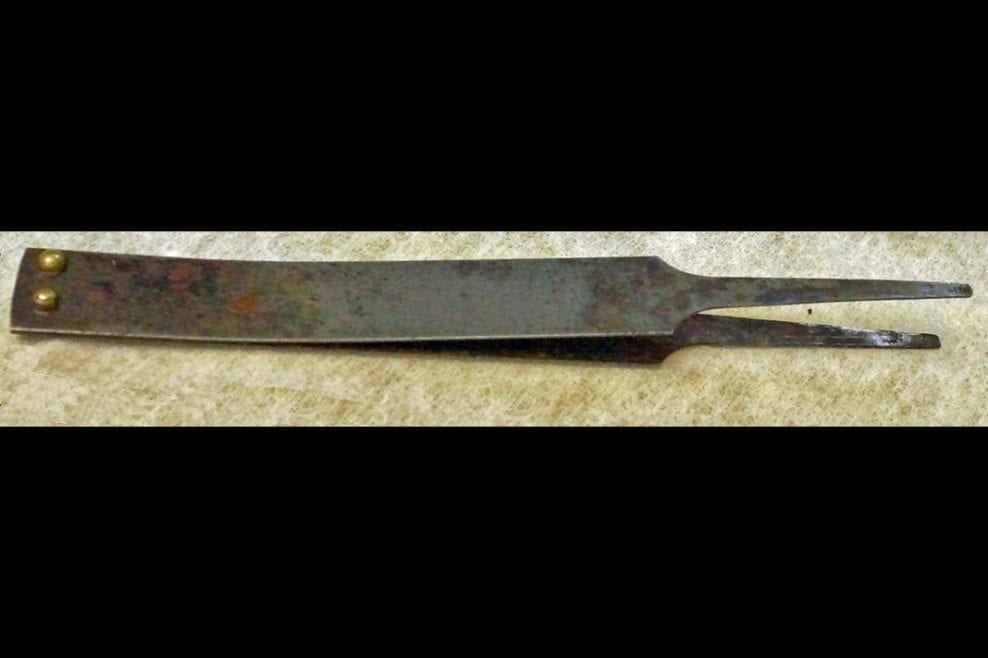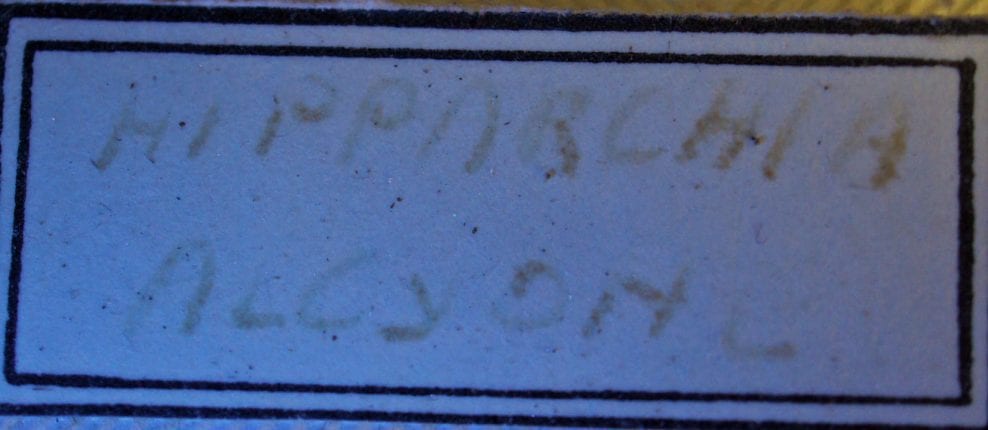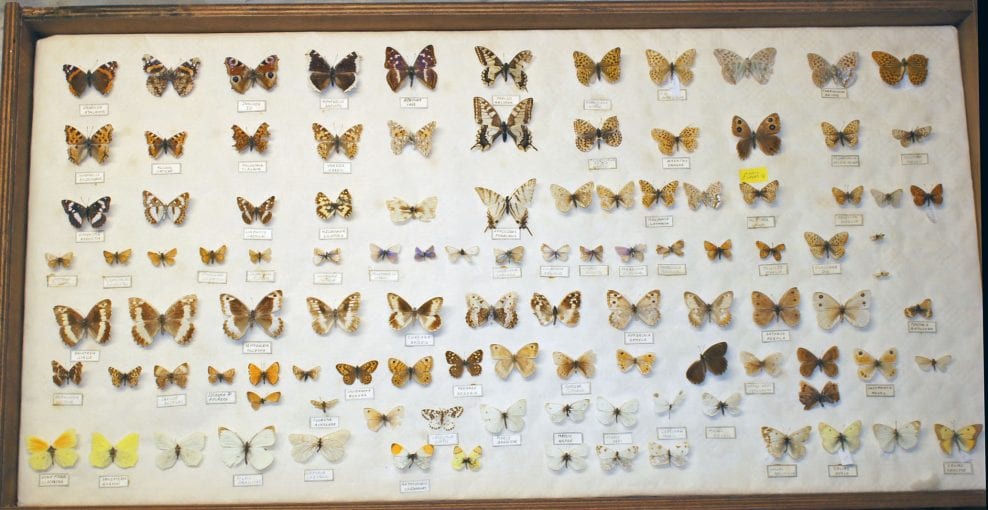Projects
Repair of damaged lepidopterans.
Repair of c. 100 lepidopteran (butterfly and moth) specimens, many of which were crushed by the breaking of the glass lid during transit. The wings were repaired by underlaying them with torn slivers of 10 gsm Gampi tissue using neutral pH PVA adhesive.
This type of work can seem daunting but there are often plenty of specimens on which to practice due to the prevalence of insect pests, especially the larvae of the Anthrenus carpet beetles! As with conservation practice, the understanding of the materials is vital.
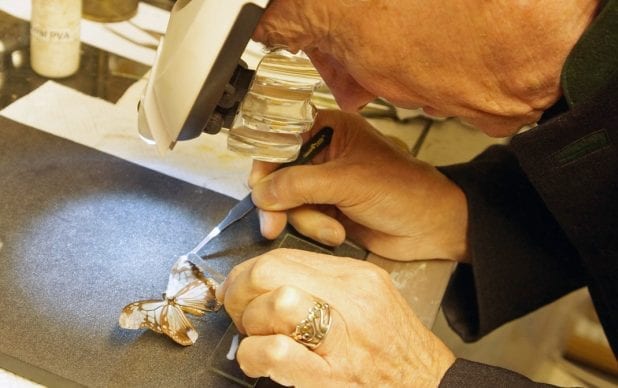
All specimens moved to entomological collection boxes and three Stewart boxes filled with wings and body parts. Case swept clean of glass fragments and micro-shards.
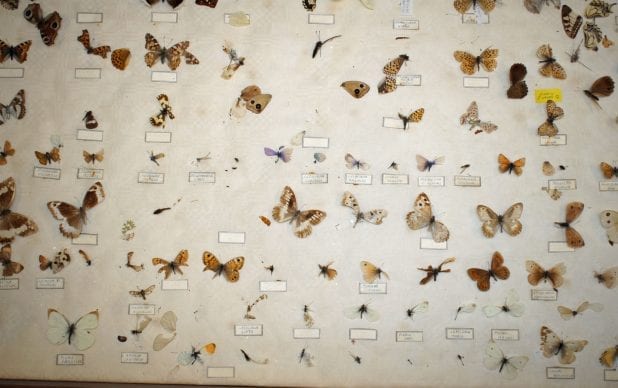
The wings and body parts were classified and grouped into lepidopteran families. More intact specimens treated first: wings re-adhered to correct specimens with discreet Gampi tissue flanges and PVA adhesive.
Wings classified
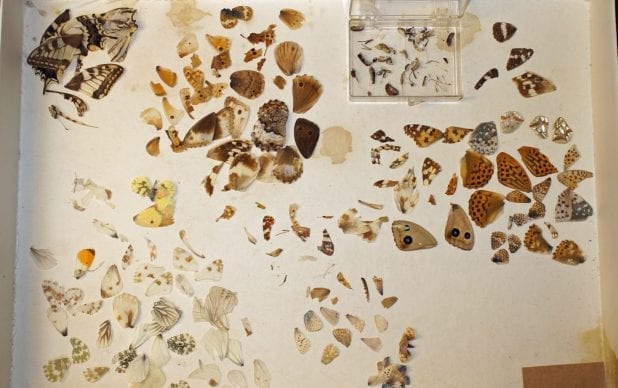
Applying adhesive to tissue can result in problems as the tissue will rapidly roll into a tight scroll if too much adhesive is applied. The tissue is dragged through the adhesive on a glass slide until only enough adhesive remains on the tissue for it to adhere but remain flat during application.
Dragging the tissue through adhesive
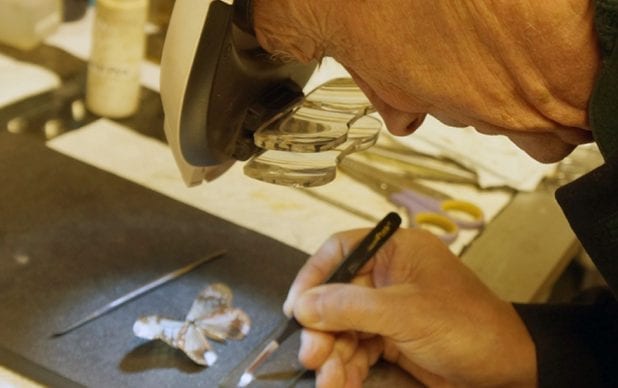
The application requires great precision as you only have one chance to get it right! The wing scales also resist adhesion at first so great patience is also required. Where gaps occur in the wings (pest damage), these can be touched in with gouache, having pre-prepared the exposed surface of the tissue by sizing it with a thin layer of the adhesive.
More seriously fragmented wings were underlined with Gampi tissue and adhesive as supports (outlined below); then the specimen was gradually re-assembled.
Tiger swallowtail
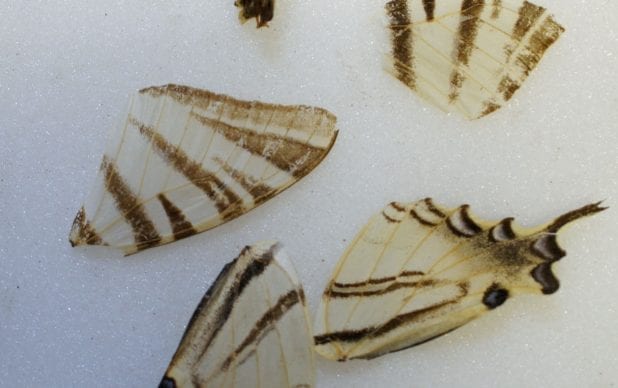
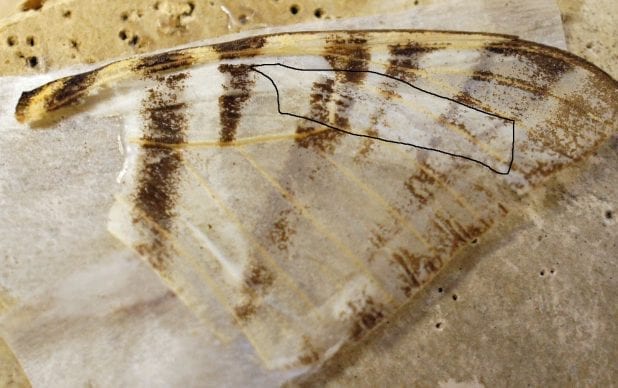
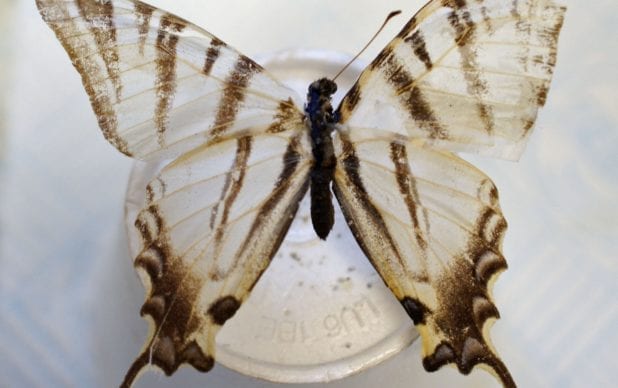
Other body parts (abdomens, antennae) were adhered, where appropriate, using special flat sprung forceps to handle them. These forceps will drastically reduce the chance of breaking the ultra-brittle antennae!
Antennae forceps
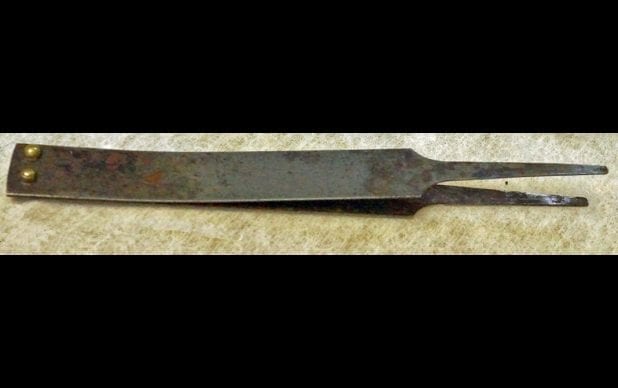
Most labels were faded, many illegible but were restored by reading with UV light and re-inking with a 0.1mm point pigment pen.
Bleached label UV
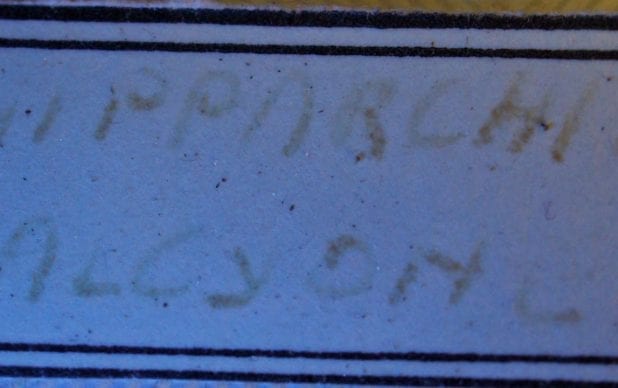
Missing 4mm glass re-cut but would not fit into the case due to some old warping on the upper right side; this area was planed down until the glass fitted correctly. One box edge with a 3mm gap had also opened due to old warping, this area cleaned out, then clamped together using PVA wood adhesive.
Glass cleaned and inserted; the case was then sealed with gummed paper tape along top of the case to keep pests out. Other edges of case where smaller gaps had opened over time were also taped.
